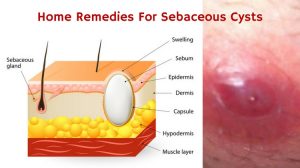Sebaceous Cyst Removal

Sebaceous cysts are small, benign, amorphous lumps found in the skin. They contain keratin and lipid. Some of the material may be rancid due to its relative fat content, bacterial infection, or decomposition. A spontaneous rupture may discharge a soft, yellow material into the dermis. This causes a tremendous inflammatory response. Eventually, scarring will occur, making the removal of the sebaceous cyst more difficult.
A sebaceous cyst may not cause any visible symptoms. In fact, it’s possible that a cyst may be infected with bacteria, leading to an infection. If you suspect that your cyst has an infection, your healthcare provider will likely prescribe antibiotics. Although it’s not harmful, a swollen cyst may become infected. If it becomes infected, the bacteria infected with the sebaceous fluid can spread to the surrounding tissue and result in cellulitis, which can be dangerous. If you suspect that your cyst is infected, you should seek medical attention immediately.
Treatment is available to treat sebaceous cysts. If left untreated, sebaceous cysts are harmless and rarely need to be treated. However, in some cases, they can become malignant. Fortunately, there are no known cures for a sebaceous cyst, and there’s no reason to be alarmed. You can learn more about this condition by visiting a dermatologist.
A doctor can perform a sebaceous cyst removal. There are two main methods of excision – conventional and minimal. Both methods leave minimal scarring and a higher chance of recurrence. In the case of minimally invasive treatments, the sebaceous cyst is removed with a laser and the outer walls of the cyst are removed, leaving the area with no trace of the bump. You may also be given ointment to prevent infection.
The most common treatment for a sebaceous cyst is a warm, moist compress. If the cyst is visible, it may be drained by using a warm, moist compress. In severe cases, a healthcare provider may opt for a surgical procedure. A swollen sebaceous cyst can be painful and will usually require medical intervention. There are no known treatments for sebaceous cysts, so it’s important to consult with a healthcare provider to find out what’s best for you.
The removal of a sebaceous cyst involves a combination of techniques. Patients may opt for a traditional wide-excision, or they may elect to have a minimally invasive procedure. A minimally invasive procedure will leave minimal scarring, but it is not recommended if the cyst has already been damaged. A biopsy is the only way to ensure that the cyst is benign or malignant. While a sebaceous cyst is harmless, it can be very painful and may need medical attention.
Surgical treatment of a sebaceous cyst depends on its location and severity. Most of these cysts disappear on their own. Some of them may be inflamed, painful, or infected. Surgical removal of a sebaceous cyst may be necessary if it ruptures. If it is infected, the surgeon will remove the outer layer of the cyst. An injection of steroids can shrink an inflamed cyst.
Since a sebaceous cyst is filled with sebaceous glands, it is important to seek medical attention. Fortunately, there are many treatments for the milder form of this condition. Do-it-yourself procedures can be painful and can lead to infection. Moreover, self-treatment can worsen the patient’s condition. However, a professional may recommend the procedure if the patient experiences severe pain and complications.
A sebaceous cyst is a benign, painless cyst that forms on the surface of the skin. These inflammatory lesions are best treated as they can lead to a painful infection. Inflammation may be a sign of a more serious condition. If you suspect you have a sebaceous cyst, contact your dermatologist and site immediately Handaldok.com. This treatment is effective for a number of reasons.
In rare cases, a sebaceous cyst can develop as a result of a genetic disease. A sebaceous gland cyst occurs as a result of blockage of the opening of the sebaceous gland. It can form in a damaged area or be the result of an injury. A skin condition or hereditary genetic predisposition can also cause a sebaceous cyst to form.


